Epoxy floors are one of the most popular flooring options for both homes and businesses. They offer a sleek and polished look that adds a sense of professionalism to any space.
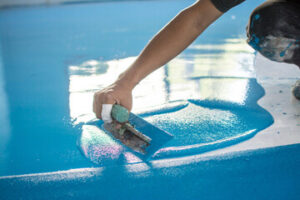
Epoxy floors are highly durable and can withstand heavy machinery, impact damage, and even chemical spills. In addition to their strength, they are easy to maintain and clean. Visit https://www.topcoattechnicians.com/ to learn more.
Epoxy flooring is a great way to upgrade the look of any room. It is also durable and resistant to fire and water. This type of floor is easy to clean and does not require any harsh chemicals, making it a green choice for a business or home. In addition to being an eco-friendly choice, epoxy floors are easy to install. However, it is important to follow the proper steps in order to ensure the best results.
First, the floor must be cleaned and degreased. Afterward, the cracks and pivots should be filled. Depending on the size of the floor, grinding may take several days. The floor should then be swept and vacuumed to remove any dust created by the grinding process. It is also necessary to apply a moisture barrier, as this will help prevent damage to the concrete floor in the future.
Before applying the epoxy coating, it is important to sand the floor down and make sure that it is smooth and free of oil or grease. It is also necessary to do a surface inspection and fill any cracks that appear. A shot blasting machine is a good option to use when this step is taken, as it will remove the top layer of the concrete floor and leave it with a rougher texture that will allow the epoxy to bond with it better.
It is important to wait for the floor to completely dry before proceeding. It is also a good idea to test the moisture level in the concrete floor using a simple moisture kit. Once the level is below 5%, it is safe to apply the epoxy coating.
The first step in the application process is to mix the epoxy resin and hardener per the manufacturer’s instructions. This will likely cause the mixture to feel warm to the touch. It is also a good idea to add a non-slip additive into the epoxy solution as it is being mixed, as this will help prevent the floor from becoming too slippery.
After the epoxy is mixed, it should be applied in thin coats with a squeegee. After each coat, the squeegee should be run across the floor to ensure that it is evenly coated and to eliminate any bubbles. Once the last coat is applied, it should be allowed to dry for 24 hours. It is a good idea to apply a clear topcoat after this time, as this will help the epoxy resist the elements and protect it from damage.
Durable
Epoxy flooring has a long lifespan and adds value to any space. However, its durability depends on several factors, such as the quality of the epoxy material used and expert installation. In addition, preventive actions such as incorporating walk-off mats at entryways and performing consistent floor inspections can help to mitigate dirt and moisture permeation that can lead to damage.
In addition, if you have a trusted professional floor contractor install your epoxy flooring, they will know how much traffic you expect your floors to endure and can recommend an appropriate material for your needs. For example, a residential epoxy floor is likely to encounter only you and your family members as well as guests a few times a week. However, industrial spaces will experience heavy foot and vehicle traffic as well as the use of tools and forklifts on a regular basis.
Because of its thick and seamless structure, epoxy is highly resistant to impact, water, heat, and chemicals. Its protective qualities make it a great option for commercial and industrial areas as it can easily hold the weight of vehicles, equipment, and machinery without damage.
The material is also easy to clean and maintain, making it a great choice for high-traffic areas. Regular sweeping, mopping, and occasional resealing or re-coating can significantly extend its lifecycle and preserve its appearance.
Additionally, if you want to change the color of your epoxy flooring, you can do so with relative ease. This makes it easy to create a unique and stylish look in any space.
Epoxy flooring is a durable and cost-efficient solution for your home or business. It’s easy to see why so many people love it. However, it is important to keep in mind that like all materials, epoxy can chip or crack over time. If this occurs, it is essential to have a reliable and experienced professional inspect the area and repair or re-coat as needed. This will help to extend the longevity of your epoxy and protect your investment. If you’re ready to give your home or business a makeover, consider installing epoxy flooring today.
Aesthetically Pleasing
In addition to their durability and resistance, epoxy floors can be customised to match the aesthetic of your space. Whether you prefer a sleek, minimalistic look or a bold, eye-catching design, there are endless options available to suit your needs. Epoxy flooring is also non-porous, making it easy to clean and hygienic. In fact, routine sweeping and mopping is typically enough to keep your floors looking like new.
Unlike ceramic tile, which is often used for commercial spaces and can become stained or etched by oil and other substances, epoxy floors are extremely durable and can be easily cleaned. In addition, they can be customised to incorporate anti-slip additives for safety and decorative flake designs for style. This means that your epoxy floor will be a practical, functional addition to your home or business that will also add to its overall value and beauty.
While it is important to note that the application process for epoxy can create some fumes, these are usually not harmful to asthmatic individuals unless exposed for long periods of time. However, those with asthma should check in with their doctor before having an epoxy coating applied to their flooring.
One of the reasons why epoxy is a popular choice for garages and basements is because it can withstand temperature extremes. Moreover, the resin can resist chemicals and heavy machinery, making it ideal for warehouses, workshops, and other industrial settings. Furthermore, the fact that it can be applied over existing concrete surfaces makes it an economical option for commercial and residential garages and basements.
Epoxy is also resistant to a range of chemical spills and is able to withstand heavy foot traffic. It can be laid over concrete, steel, or masonry and can be designed to include specific elements, such as anti-slip additives. This makes it a great option for warehouses, workshops, and other industrial environments, as well as retail and commercial locations.
Another advantage of epoxy is that it can be applied in a wide range of colours and styles, which makes it a great option for any room in the house. This versatility allows it to blend in seamlessly with other types of flooring, such as carpeting or vinyl tiles, and can even be customised to match your design aesthetic.
Slip-Resistant
Slips, trips and falls are a significant problem in commercial, industrial and even residential settings. They can not only be dangerous but also costly. This is especially true in workplaces, where liability is often a major issue for businesses. Adding an epoxy slip resistant coating to your floor can help to control, minimise and mitigate potential hazards.
An epoxy floor coating is an extremely durable surface that can withstand a lot of impact. This makes it an ideal choice for industrial flooring, as it can withstand the rigours of a manufacturing environment and stand up to heavy machinery. Additionally, it can be installed over concrete floors that have been damaged or worn down, making them more suitable for use.
Additionally, an epoxy floor coating can be made to be highly slip-resistant. This is particularly important in manufacturing environments, where an accident could result in extended downtime and lost productivity. An experienced epoxy flooring company can create a floor that is highly slip-resistant yet still easy to clean. This helps to ensure that your employees can work safely and quickly, without fear of slipping or losing their balance.
A good epoxy floor coating can be made to be slip-resistant by adding a layer of aluminium oxide or another aggregate to the finish. This can be mixed into the epoxy resin, or applied to a pre-existing floor in the form of a trowel on application.
The aggregate layer in an epoxy floor coating can be varied to achieve the desired slip resistance, and this can be a cost-effective way of ensuring safety while maintaining an appealing design. It is important to note, however, that the more aggressive the slip resistance, the harder the floor will be to clean.
An epoxy floor coating is a long-lasting, hardwearing surface that will retain its colour and gloss for a long period of time. This is due to the polymer chains that form during the curing process, and it is important to choose a professional epoxy flooring company for your installation. An experienced company will be able to create a floor that is both durable and attractive, and will offer a range of options for you to choose from.
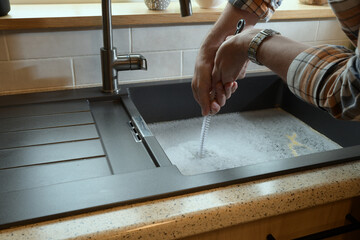
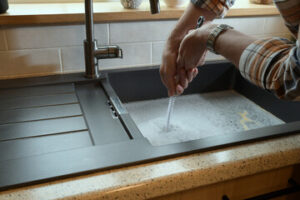
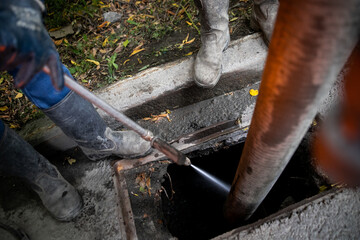
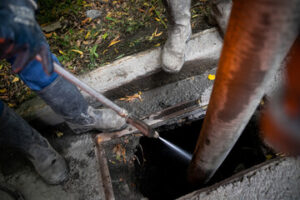

 The design of a dock will depend on many factors, including the lake bottom and shoreline. It is also important to check the local regulations and ordinances to ensure that your dock is not violating any laws. If you do, you may avoid ending up in violation and having to tear down your dock. Consult a local contractor at
The design of a dock will depend on many factors, including the lake bottom and shoreline. It is also important to check the local regulations and ordinances to ensure that your dock is not violating any laws. If you do, you may avoid ending up in violation and having to tear down your dock. Consult a local contractor at